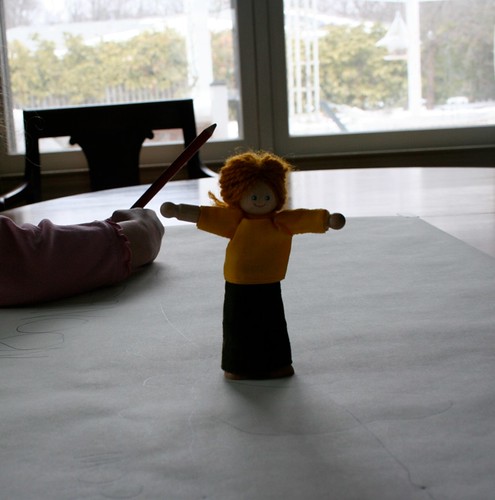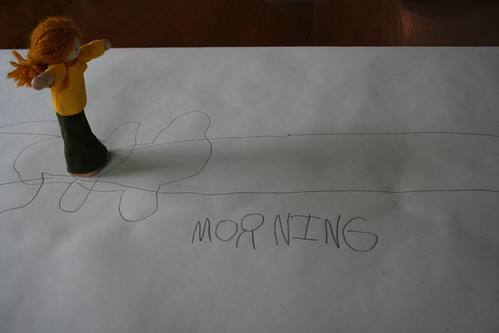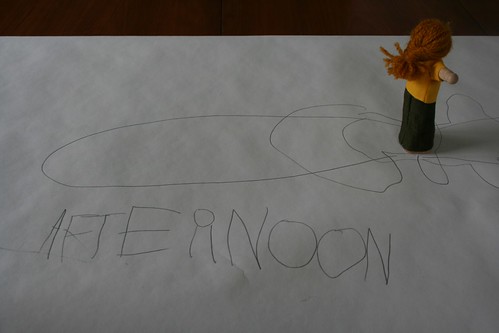
My five-year-old daughter is a scientist. It is my firm belief that all children are natural scientists, but my five-year-old has embraced this persona with her whole being. She observes, she classifies, and she questions. We sit in the kitchen and watch the birds at the birdfeeder, and it is not enough for her to learn their names -- we need to get out the bird book and read about their migratory patterns, what color eggs they lay, whether they are native to this area (who knew that starlings were such recent additions to the U.S.?), etc. I am constantly learning from her insatiable curiosity. It is such a gift in my life.
So last week, on a rare bright and sunny winter day, she commented on the length of her shadow and that she had noticed that her shadow seemed to change size. "Why is my shadow sometimes really long and going far away from me, and why is it sometimes just a little puddle around my feet?" An excellent question. So we set out to answer it.

Sure, I could have read her something out of a science-for-kids book. We could have talked about the angle of the sun. But I've found that, whenever possible, it's better to show than to tell. So we set up an experiment. We placed a doll in the center of a long piece of paper. Then I used a bright flashlight to simulate the sun, first shining from one side of the table, then slowly moving upwards until it was shining directly down on the doll (apparently she was standing on the equator, but nevermind that), and then gradually moving to the far side of the table. We traced the shadow of the doll at five different places. And sure enough, she concluded that shadows will be long at the very beginning and end of the day, and smallest exactly at noon. Question answered, and the best part? She answered it herself, from her very own observations. There's no better feeling for a budding scientist.

Next week? I can't decide between using a ball and flashlight to demonstrate the phases of the moon, or how the angle of the sun affects the seasons. What do you think? Any favorite science experiments to do with preschoolers? What are your budding scientists studying right now?
This post is part of the Moms' 30-Minute Blog Challenge, hosted by Jamie over at SteadyMom.
Awesome! This is so great, my kids ask questions like this and I don't always take the time to let them explore and find the answers themselves. But you are sooo right, when they find it themselves that is when real learning takes place. We've been studying weather and made a weather vane last week - they liked that. This morning we melted crayons and candy canes in the oven just to see what happens! :) fun times.
ReplyDeleteI loved how you took the time to explain. This is a great reminder for me.
ReplyDeleteVery cool. This is a great example of what natural learners our children are. They live in the moment and learn the same way. Thank you for sharing you daughters observations and how you handled them.
ReplyDelete:)Lisa
fantastic! what a great idea!
ReplyDeleteThat's one clever kidlet!!! Love it!!!
ReplyDelete"Let's find out" or "let's look it up" if needs be is always a favorite part of my day. :)
ReplyDeleteExcellent!
Stephanie